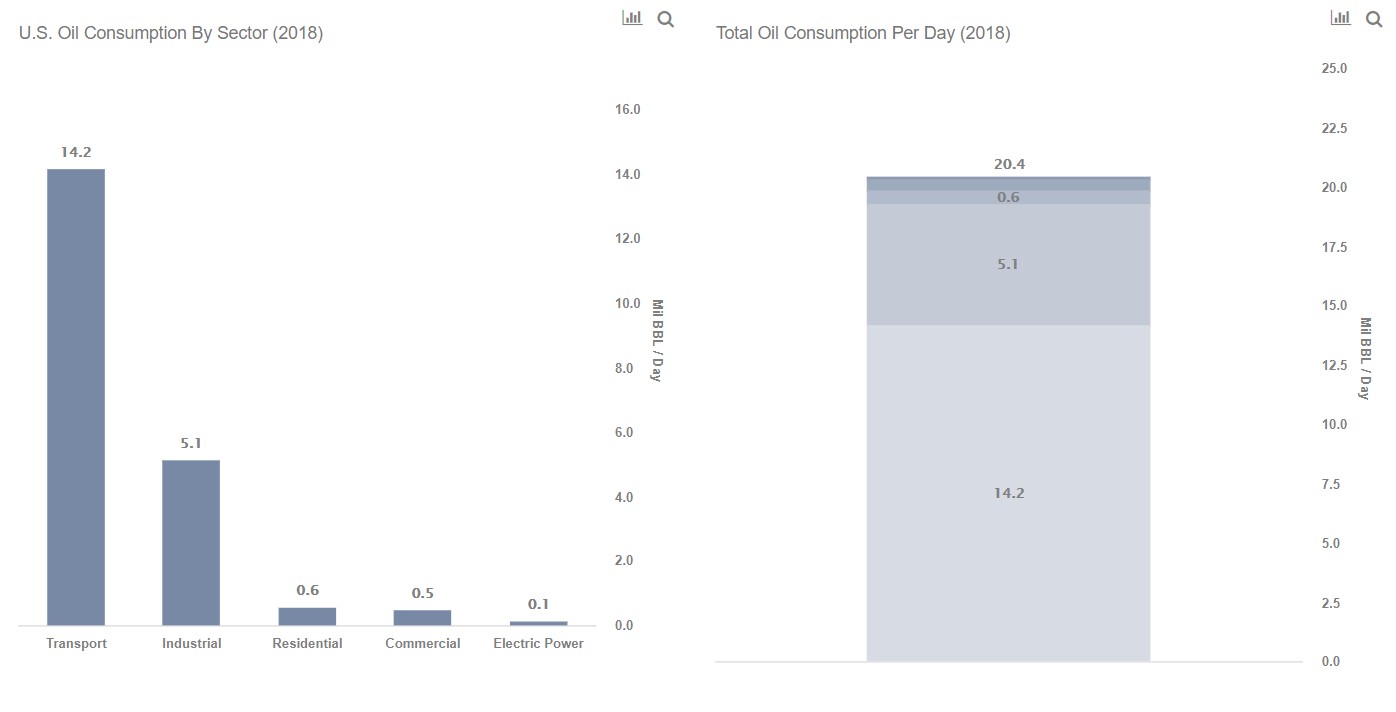Oil Prices Don’t Like The New Work From Home
Crude oil prices have fallen to multi-decade lows with the U.S. oil benchmark briefly falling to negative levels due to a collapse in demand caused by the Coronavirus pandemic and rapidly diminishing storage capacity for excess crude. Transportation of all forms accounted for roughly 69% of U.S. oil consumption or roughly 14.16 million barrels per day as of 2018 – making it a major lever of crude oil demand and prices. However, transportation demand is likely to have dropped sharply as millions of Americans continue to work from home and are unlikely to drive or fly to vacations or take business trips until the pandemic eases.
View our dashboard analysis on U.S. Oil Consumption By Sector
Decline In Road And Air Traffic
Overall daily national traffic volume for consumers, local fleets, and long-haul trucks was down 38% for the period between March 21 and 27, compared to Feb. 22 and 28, per Transportation data provider INRIX and it is likely that traffic has only declined further over April. Although oil consumption and miles-driven often picks up as prices decline (drop in oil prices in 2015 was associated with vehicle-miles growth rates around 2%) things are likely to be different this time around as the pandemic restricts activity. The demand for air travel has also plunged. According to the U.S. Transportation Security Administration, daily passenger screenings at airports have dropped by roughly 96% in the month of April, compared to early March. Just about 99k passengers were screened across U.S. airports on April 20th, versus about 2.2 million on March 1.
The Pandemic Likely To Cause A Structural Shift
The crisis could cause a more structural shift as well. Working from home and using video conferencing has become the norm for many people in the current pandemic, and this is likely to continue until a vaccine is developed and administered at scale. These trends may even continue to an extent in the post-COVID world as well. For instance, businesses could encourage employees to continue to work from home for at least a couple of days a week, while reducing business-related travel, as they look to cut travel and office space-related costs and boost profitability. This could, in turn, reduce demand for oil.

Related Analysis
- Exxon Mobil Downside: How Low Can Exxon Mobil Stock Go?
- Trefis Work From Home/Learn From Home Portfolio
See all Trefis Price Estimates and Download Trefis Data here
What’s behind Trefis? See How It’s Powering New Collaboration and What-Ifs For CFOs and Finance Teams | Product, R&D, and Marketing Teams
